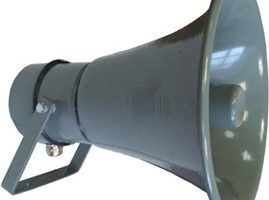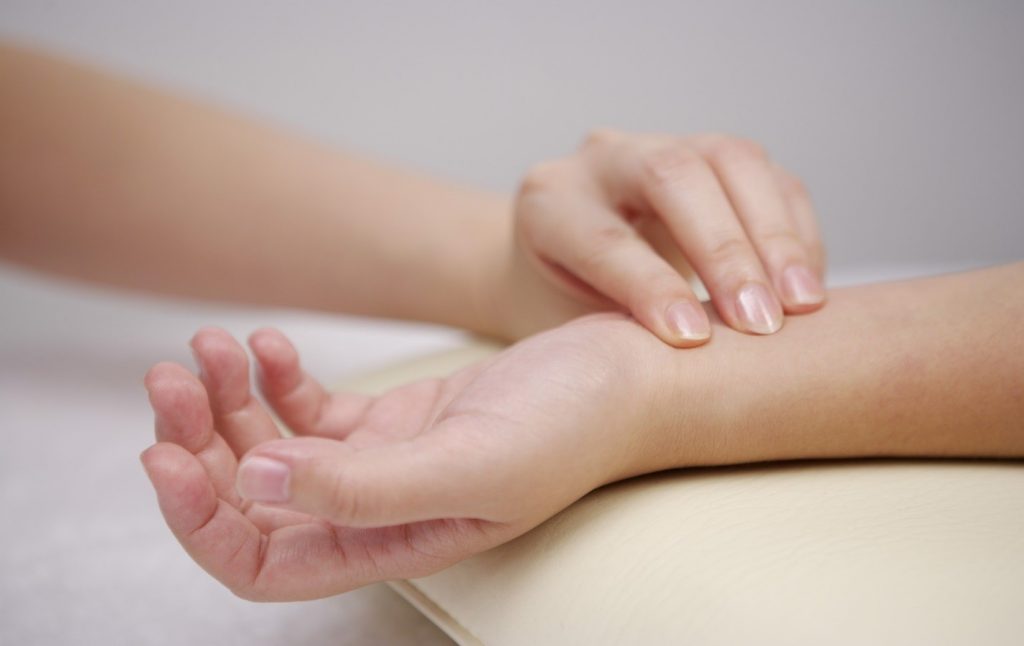
Heart rate measurement
Pulse - the movement of the walls of arteries in a certain rhythm caused by the work of the heart. Its correct pace is one of the most important indicators of the health of the cardiovascular system as a whole. Therefore, it is so important to be able to measure the pulse yourself at home.
Heart rate
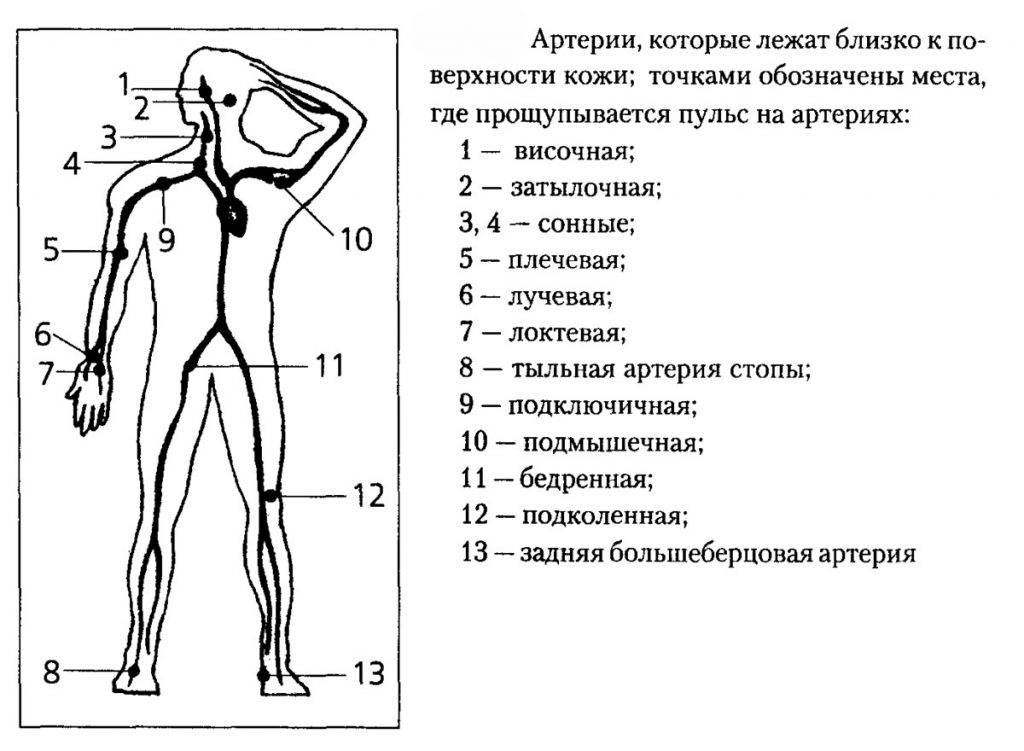
Places where you can feel the pulse
There are several types of pulse: arterial, venous, capillary. The first is characterized by the strength of the oscillations of blood vessels that carry blood from the heart to the organs. The heart cycle is divided into systole (contraction) and diastole (relaxation). During systole, the pressure in the arteries rises and their walls begin to oscillate. This is the arterial pulse.
When venous vessels fluctuate, they “supply” blood to the heart. With regards to capillary changes, they are hardly noticeable. Therefore, they are not determined on small vessels. In arteries, blood pressure is quite high, it is easier to measure the pulse there. The most accurate are the indicators on the carotid, temporal, brachial, ulnar, femoral arteries.
When studying a pulse, its main characteristics are necessarily taken into account:
- Frequency. This parameter shows how often the heart contracts in one minute. An abnormality in heart rate can be a sign of various problems.
- Rhythm. Indicates how regular the waves are. When they appear at the same time, then we can talk about a rhythmic pulse, if not, then this condition is called arrhythmia.
- Filling. This characteristic depends on the amount of blood that the heart pumps. If there is a lot of it, then the pulse will be more noticeable.
- The form. Depends on how quickly the artery changes its volume during pumping blood.
- Voltage. The effort that must be made to clamp the artery.
General recommendations for preparing for a pulse measurement
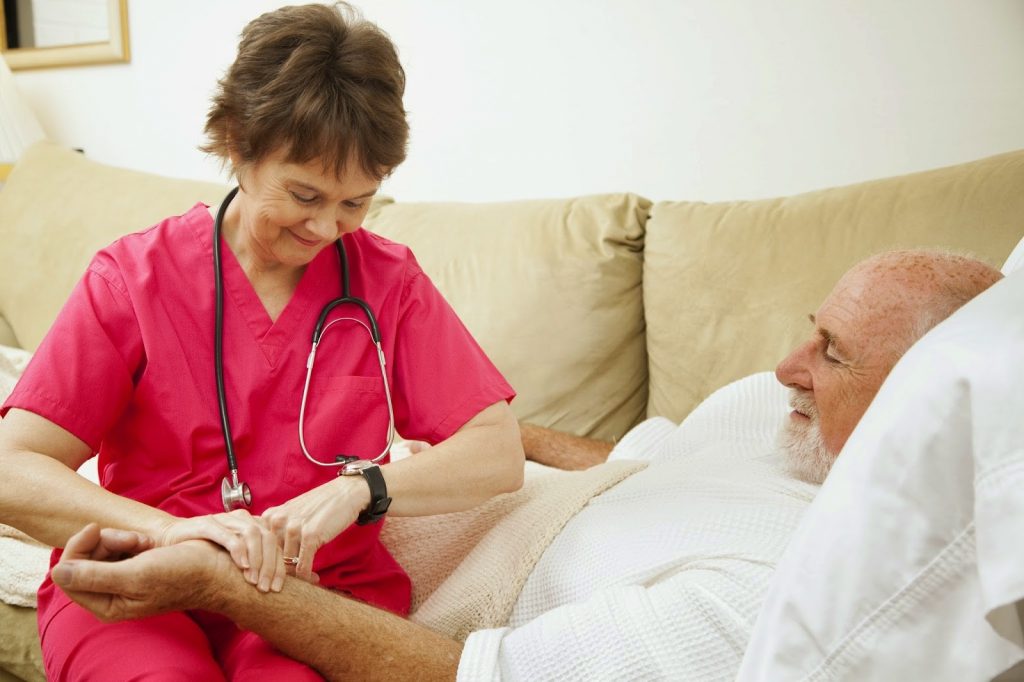
Doctor measures pulse
Before measuring, it is necessary to exclude any physical exertion, as they lead to a rapid heartbeat. Do not drink alcohol, coffee, tea. You also need to quit smoking a few hours before the measurement. A hot bath, a bath and a sauna can also affect the correct heart rate. Starvation or overeating can also affect the accuracy of indicators.
In addition, the pulse is not recommended to be measured if a person:
- is in an emotional overexcitation;
- only awakened from sleep;
- dressed in squeezing and tight clothes.
Indicators of fluctuations in the walls of blood vessels can be determined by two methods: using the device, palpation. If you know the correct algorithm, the results will be fairly accurate.
Heart Rate Measurement on the Hand, Wrist
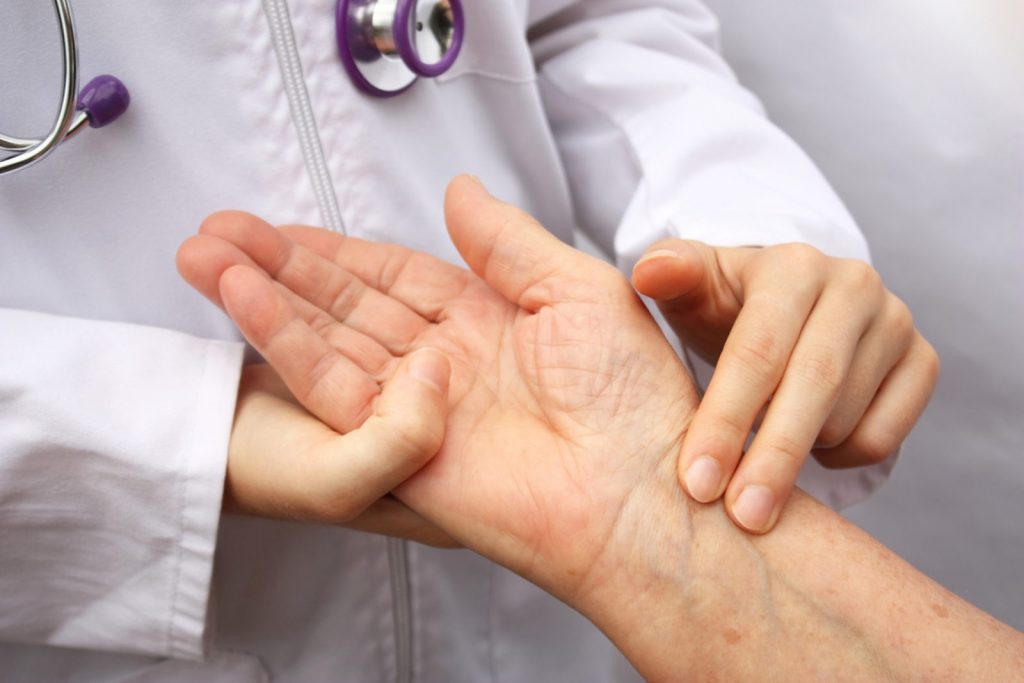
How to measure the pulse on the wrist?
Readings are taken in 15 or 30 seconds. It is recommended to measure the pulse on the left hand, although it is also worth checking on the right hand to compare the results. Normally, the indicators will not differ.
Algorithm of actions:
- Sit back and relax.
- Put your finger on your wrist in the place where the vessels are visible (you can measure with the index or index and middle at the same time).
- Before measuring the pulse on your hand, install a stopwatch and place it so that you can see the time.
- After hearing the tremors of blood, count their number.
- The most accurate measurement will be in 1 minute, although you can pinpoint 15 seconds and then multiply the data by 4 or 30 seconds and increase by 2.
Important! If the heart rate is uneven, then measuring the pulse is only for a full minute.
Carotid Measurement
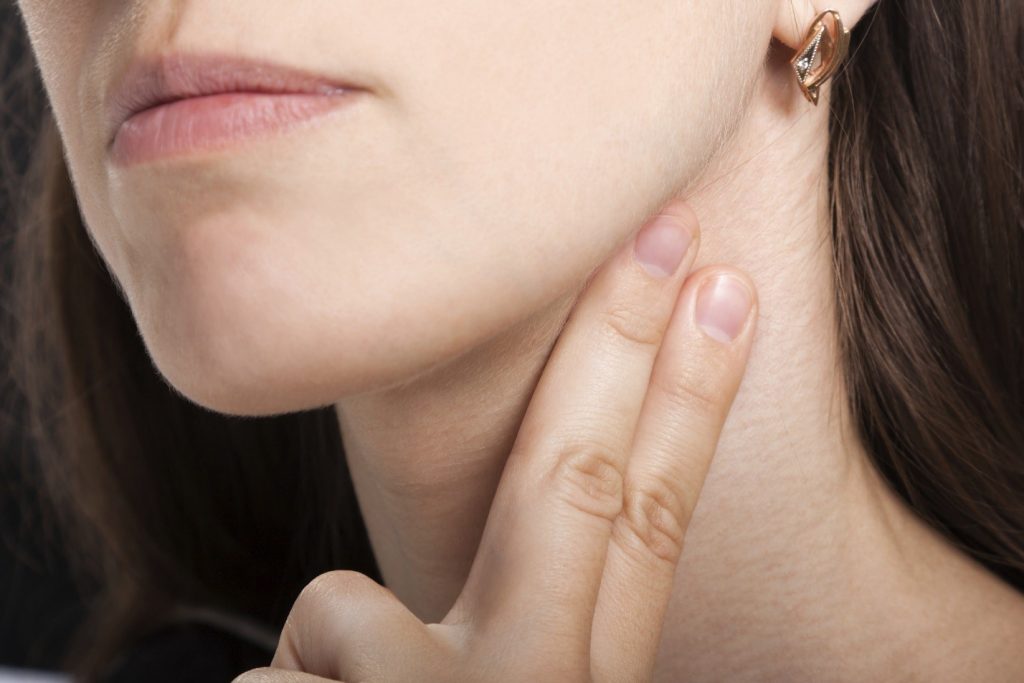
How to measure the pulse on the carotid artery?
Sometimes it happens that it is not possible to measure the heart rate on the arm, so there is an alternative method.
To measure the carotid heart rate:
- Prepare a stopwatch to make time convenient.
- Sit flat or lie down, it is advisable to remove the belt, and unfasten the collar.
- With two fingers, gently grope the pulsation on the neck, on the side of the Adam's apple.
- Turn on the stopwatch, and measure the number of heartbeats.
Measurement under the knee
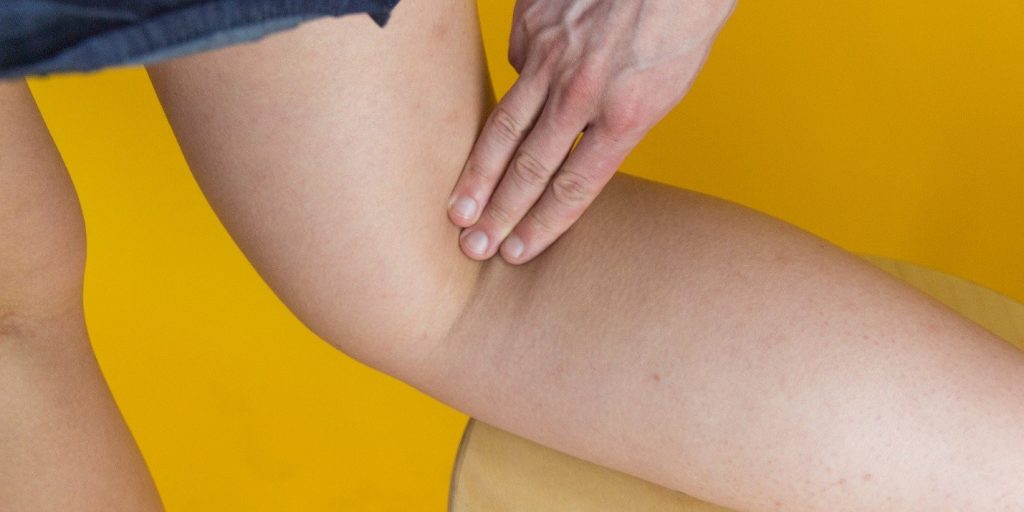
How to measure the pulse under the knee?
You need to bend and relax your leg. Use your fingers to push in the middle of the popliteal fossa. Checking the pulse in this case is more difficult than on the wrist. This is due to the fact that the vessels are much deeper and the vibrations are diffuse.
Important! Heart rate is well felt on the femoral artery. To determine its number, you need to press your fingers between the anterior superior iliac spine and the pubic symphysis. This is the main criterion on how to properly measure the pulse in obese people.
Heart rate measurement

How to measure the pulse of the device?
Heart rate monitors are different: fastened to the finger, chest or shoulder. These devices are often used by athletes to automatically and quickly collect data about the work of the heart.
To get started, it’s worth fixing the device and turning it on. After the device makes a measurement, the result will be displayed on the screen. This is a very simple and easy way.
Important! Special devices used in the clinic for diagnostics are also capable of measuring the pulse. This indicator can be set using ultrasound scanning, phonocardiography, Doppler examination.
What should be normal indicators?

Normal heart rate.
To assess heart rate, it is worth considering gender, physical fitness, age:
- in infants, the pulse is fast enough - about 140 beats / min;
- in children from one to three years - 100-124 beats / min;
- up to 6 years, the indicator should be approximately 100 beats / min;
- in young people under 18 years old - 70-95 beats / min;
- after 18 years - 60-75 bpm;
- older than 30 - 60-85 beats / min.
In men, as a rule, heart rate less often.
To prevent problems with the pulse, you need to get enough sleep, avoid stress and great physical exertion. It is also important to do regular cardio workouts, including jogging, walking, and simple walks in the fresh air. In the diet you need to enter foods rich in vitamins and minerals. Stop smoking and drinking alcohol. For any abnormalities in the work of the heart, you need to contact a cardiologist without fail. He will be able to prescribe adequate treatment and carry out all the necessary studies.


